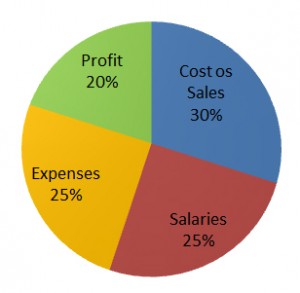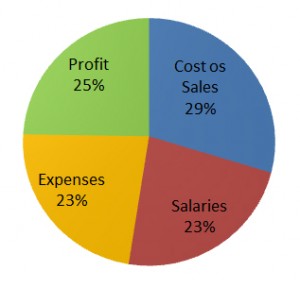A good businessman knows the numbers, a great businessman understands them.
To understand the numbers ratios are very important.
For example if Sales and Profits were increasing but the Costs are not being kept under control the Net Profit Percentage could be deteriorating.
Another example, both Sales and Accounts Receivable are increasing which is logical if you sell on credit.
However poor credit control and selling to customers who will not pay means part of the Receivables will be Bad Debts. You could be selling your way into liquidity problems and bankruptcy.
A number has little significance on its own, it needs to be compared with another to give it relevance.
Sales of $1 million sound good, a nice round number, but what were the Sales last year and, more important still, are you making a profit at that level of Sales?
As I mentioned in a previous blog, managing just using the financial data is like driving looking only in the rear view mirror.
Financial data is historical and loses ‘value’ for decision making with age. Trends need to be identified and acted upon – the number of potential customer contacts, the conversion rate into orders and the average order value will be future sales.
You may not be good remembering numbers. Don’t worry, think about them in a different way.
Let’s assume your Sales were 100, your Cost of Sales 30, Salaries 25 and Other Expenses 25.
Thinking about it as a pie chart you could visualize better that your Cost of Sales was 30%, your Salaries 25%, your Expenses another 25% leaving a Profit of 20%.
By understanding which Expenses are fixed and which are variable an estimate can be made of the Profit if Sales increased by say 10%. Cost of Sales should increase in line with Sales (to 33) while Salaries and Expenses should not change (25 each) unless a Marketing campaign has to be run to boost Sales or the business can’t handle a higher volume with the current structure.
This would be the new ‘image’.
The most important thing is having a plan and knowing where the business is going, not so much where it has been.

